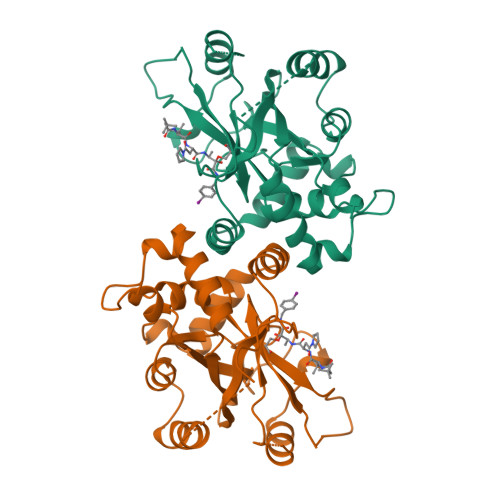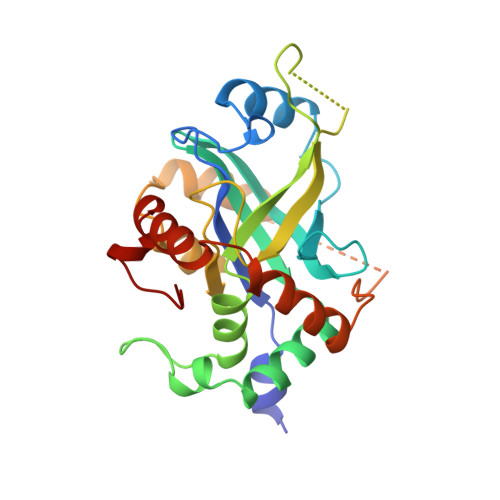Conserved mode of peptidomimetic inhibition and substrate recognition of human cytomegalovirus protease.
Tong, L., Qian, C., Massariol, M.J., Deziel, R., Yoakim, C., Lagace, L.(1998) Nat Struct Biol 5: 819-826
- PubMed: 9731777
- DOI: https://doi.org/10.1038/1860
- Primary Citation of Related Structures:
2WPO - PubMed Abstract:
Human cytomegalovirus (HCMV) protease belongs to a new class of serine proteases, with a unique polypeptide backbone fold. The crystal structure of the protease in complex with a peptidomimetic inhibitor (based on the natural substrates and covering the P4 to P1' positions) has been determined at 2.7 A resolution. The inhibitor is bound in an extended conformation, forming an anti-parallel beta-sheet with the protease. The P3 and P1 side chains are less accessible to solvent, whereas the P4 and P2 side chains are more exposed. The inhibitor binding mode shows significant similarity to those observed for peptidomimetic inhibitors or substrates of other classes of serine proteases (chymotrypsin and subtilisin). HCMV protease therefore represents example of convergent evolution. In addition, large conformational differences relative to the structure of the free enzyme are observed, which may be important for inhibitor binding.
Organizational Affiliation:
Boehringer Ingelheim Pharmaceuticals, Inc., Ridgefield, Connecticut 06877, USA. tong@como.bio.columbia.edu




















